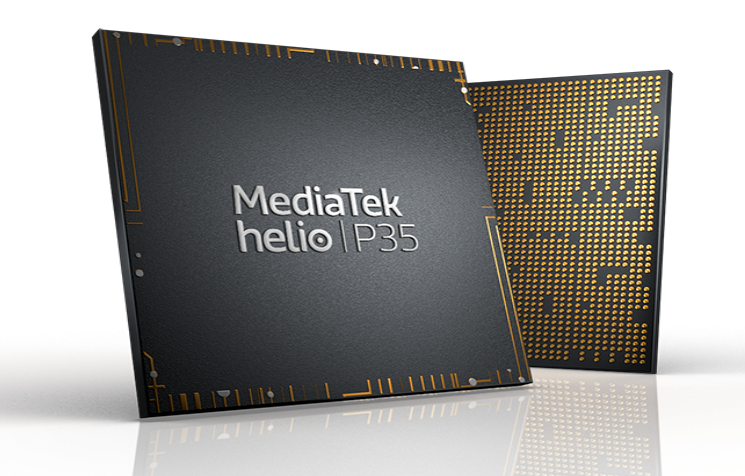Xiaomi’s Mi Play smartphone launched today and it had under its hood a MediaTek Helio P35 processor. Up until today, the only other time we heard of the Helio P35 was in a leak back in 2016. The leak revealed the chipset would be manufactured on a 10nm node and be announced in Q3 2017. That leak turned out to be false; not only did the processor arrive more than a year after the rumored date, it is also not built on a 10nm node. Below is the full details of the chipset according to MediaTek’s own website.

The Helio P35 is an octa-core chipset built on TSMC’s advanced 12nm FinFET node. Its eight cores are all Cortex-A53 cores clocked at 2.3GHz. Qualcomm’s Snapdragon 630 also uses the same type and number of cores but is clocked lower at 2.2GHz. However, the Helio P35 will be able to offer better performance and longer battery life because it is a 12nm chipset as against the Snapdragon 630’s 14nm design.
The GPU of the P35 is Imagination’s PowerVR GE8320, the same GPU inside the Helio P22 but it is clocked higher at 680MHz in the Helio P35. MediaTek says the Helio P35 supports FHD+ displays and 20:9 aspect ratio.
The processor supports LPDDR3 and LPDDR4x RAM (4GB and 6GB) and eMMC 5.1 storage. It also supports dual 13MP cameras or a single 25MP camera. It has a hardware depth engine for professional-level bokeh images, Electronic Image Stabilization (EIS) and Rolling Shutter Compensation (RSC) which erases “jello effect” when recording fast-moving objects.
READ MORE: Honor smartwatch rocking MediaTek SoC gets Bluetooth SIG certification
The Helio P35 also supports AI Face ID (Face Unlock), smart photo album, and multi-frame noise reduction. It also has dual-band Wi-Fi, Bluetooth 5.0, VoLTE, and ViLTE.
There is no news yet about other manufacturers that have signed up for the chipset but we expect brands like OPPO and Vivo to launch phones powered by the processor in 2019.
(Source)







